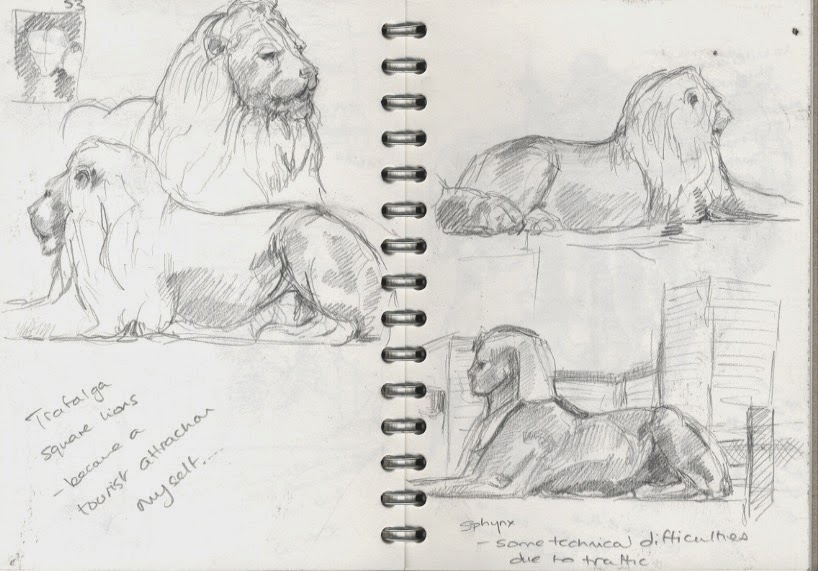For this drawing I took my car to an adjoining road and drew the back of my row of houses.
I've drawn them before from my garden so it was nice to take a different view.
The perspectives are all wrong here so I started again....
This is better but the new flats aren't at the right angle.
While I was out I though I should try some other views so I drew the community centre and the pub from both sides.
I'm interested in the contrast between the new flats and the old houses in my first drawings so that was what I returned to to do my pen and ink drawing back at home.
I did a couple of feint lines in pencil to try and ground the perspective then drew straight in ink with a dip pen using just my drawings for reference. It's more accurate than my previous attempts but it's a bit dull and stilted, more like an architectural drawing than a piece of art. Also the shading on the wall of the left hand cottage is a bit too dark, the first line came out stronger than I intended so I had to go with it. I've intentionally left the cars as outlines as I don't want them to be the focus of attention though I think they are an essential part of the composition.
The instructions do include the option to use a fine brush pen so I diluted some black ink and added some softer shadows.
The paper isn't really designed to take wet media but I think the overall effect is more coherent.
However I couldn't resist fiddling further so I added a little sepia coloured pencil and used graphite to further darken some of the greys.
I need to test whether I'm right to leave the cars as outlines.
Difficult. I think this is worse but I used 5B pencil to colour them in and it's not great however I didn't have a lot of information to base coloured versions on.
Overall I think the final drawing is unexciting and this is in part because I've worked from my preliminary sketches so the information has been diluted by repeating the drawing. I can't say there wasn't enough information for the final drawing in there original sketches, but I think I have sanitised it. I don't draw well in the car and I can't imagine using ink with a dip pen without covering everything in ink but I think an original drawing in ink would be better than a copy so ideally I would always prefer to draw directly from life.














































